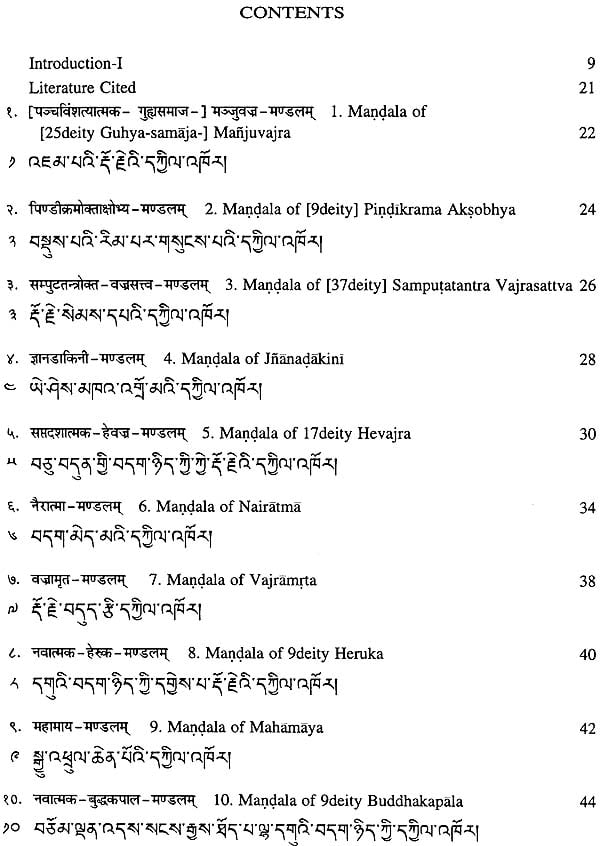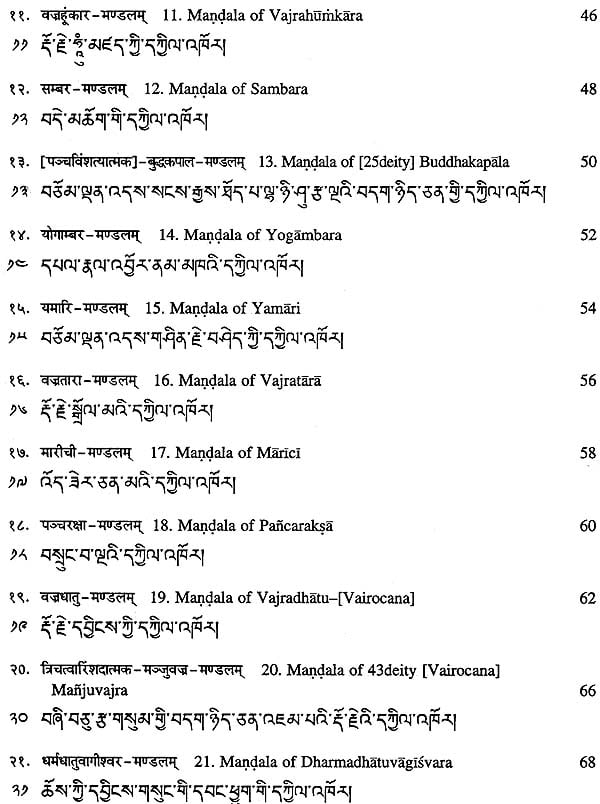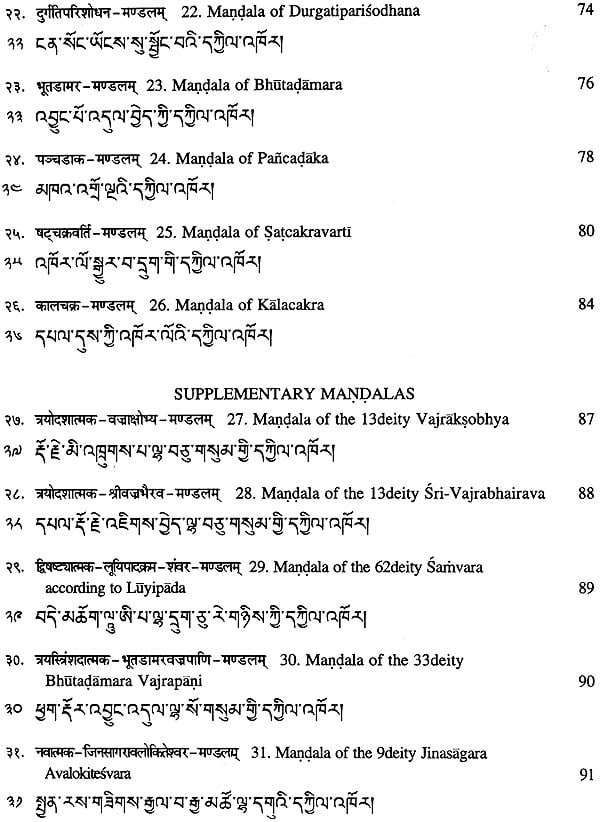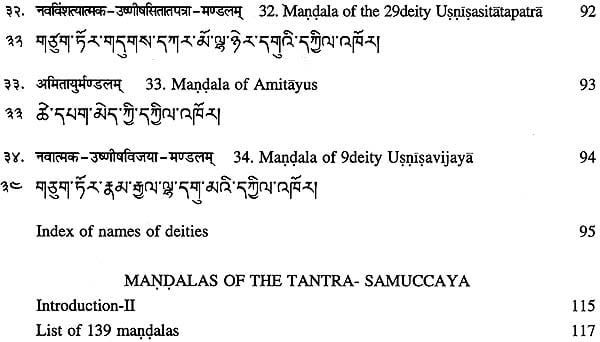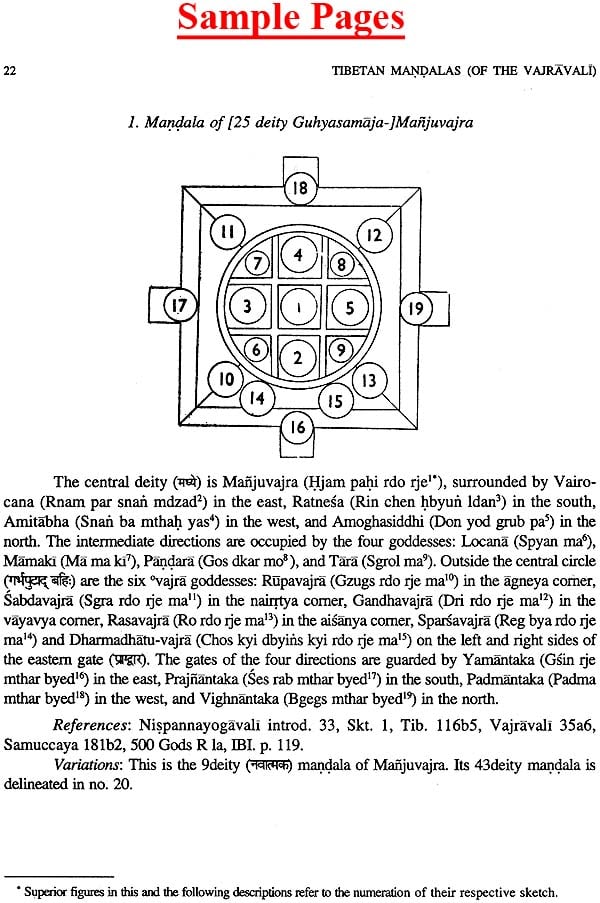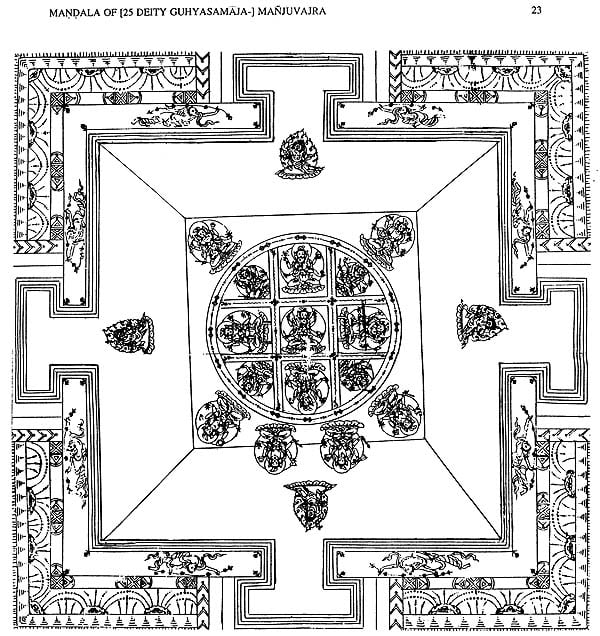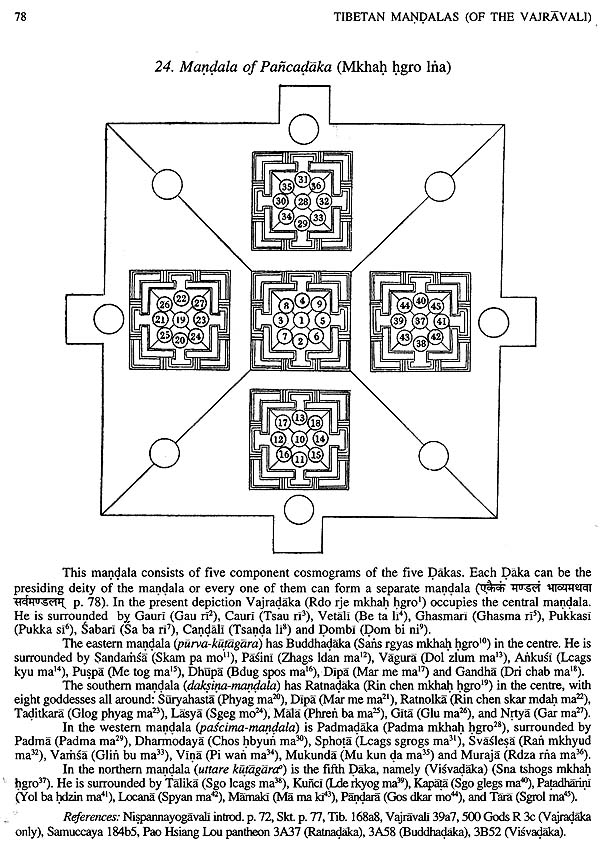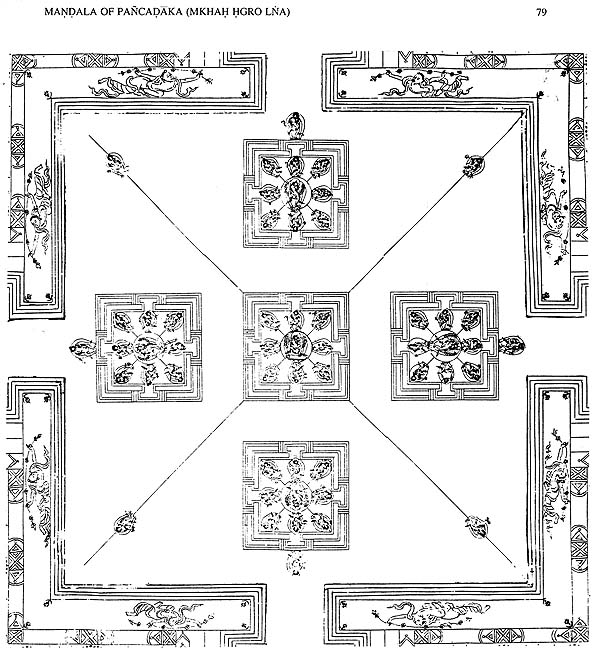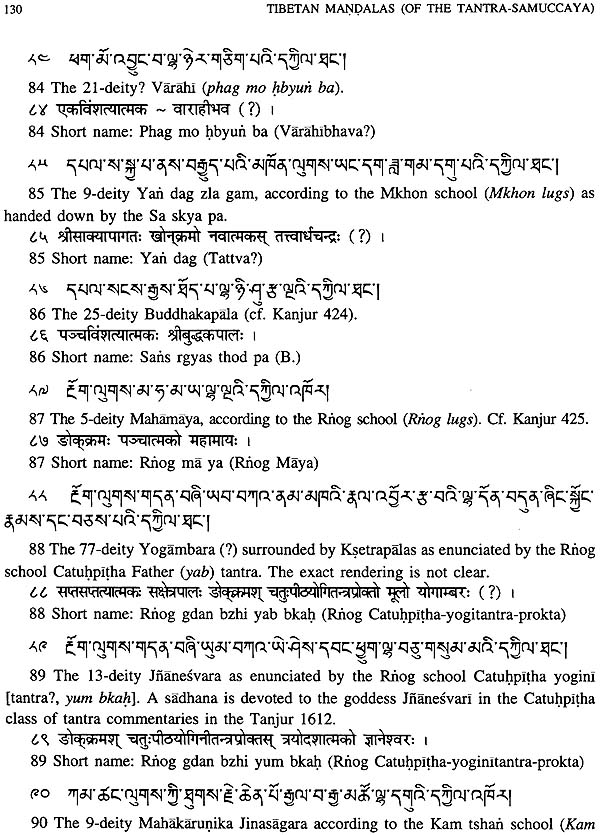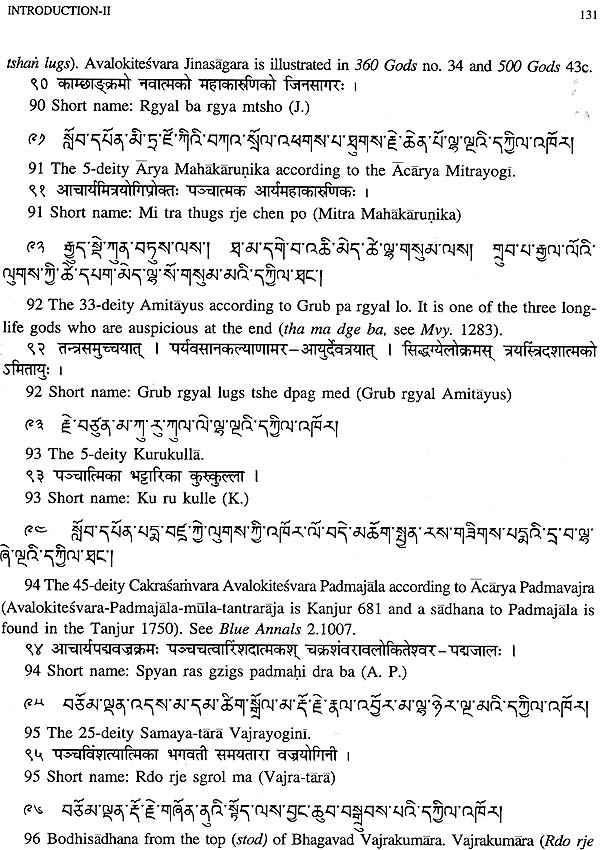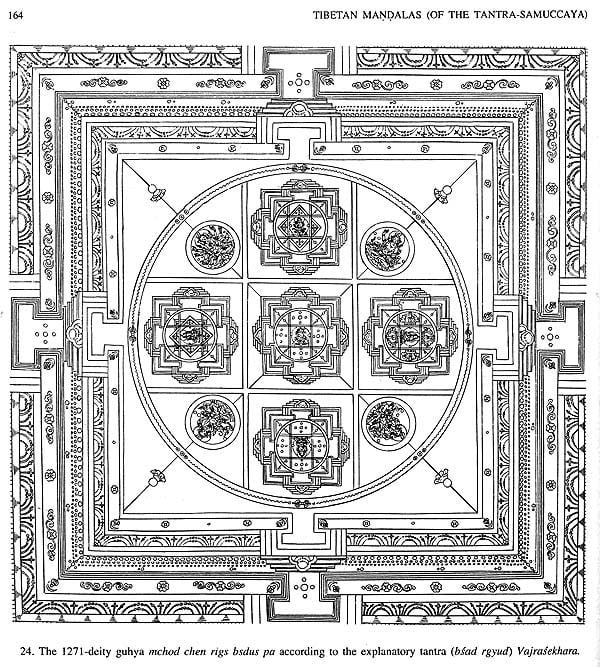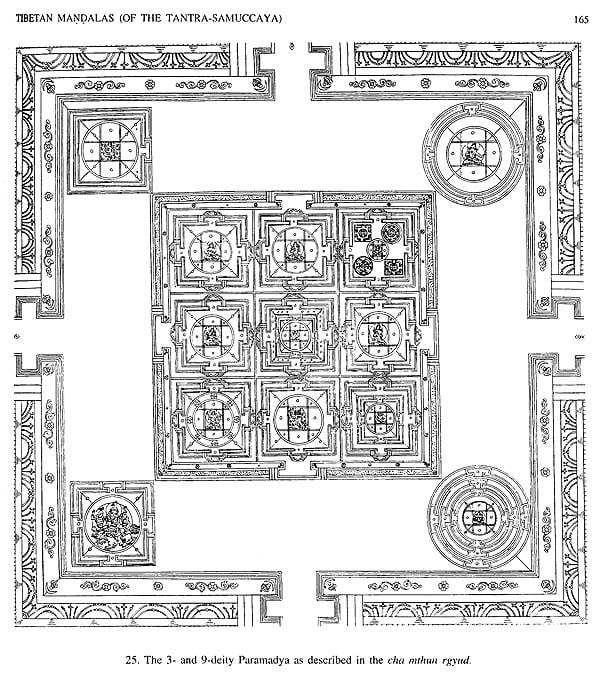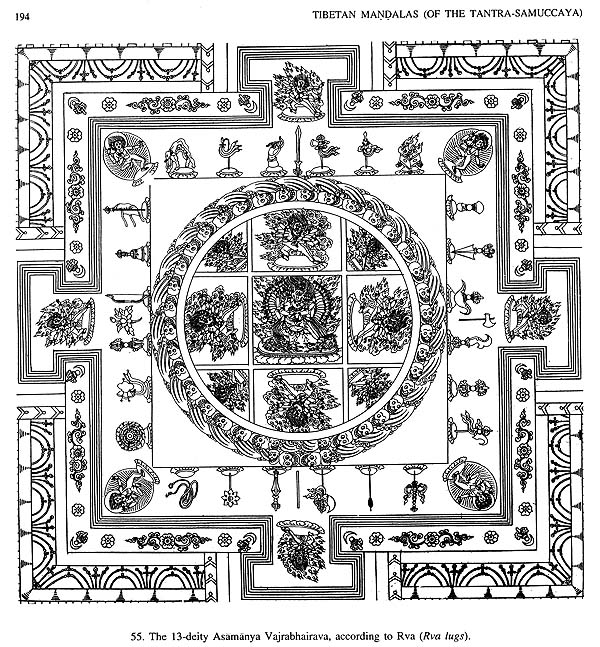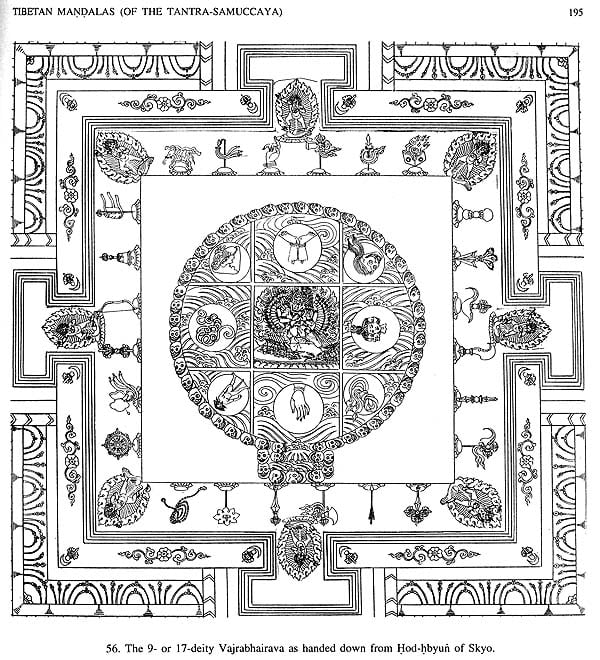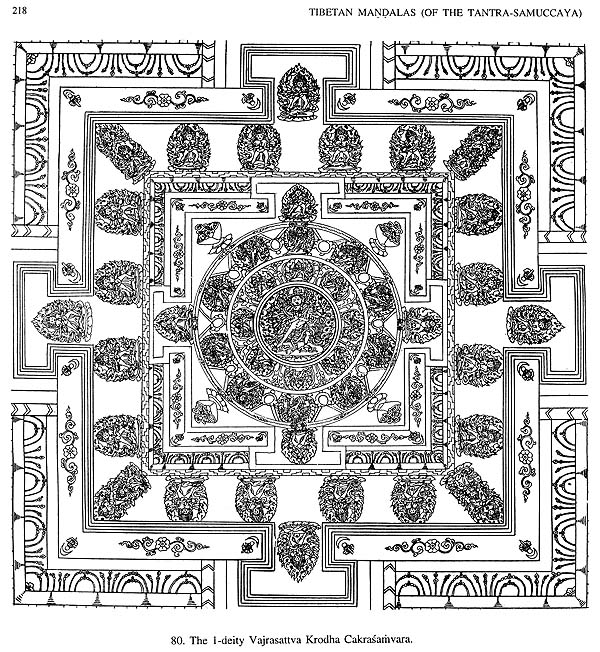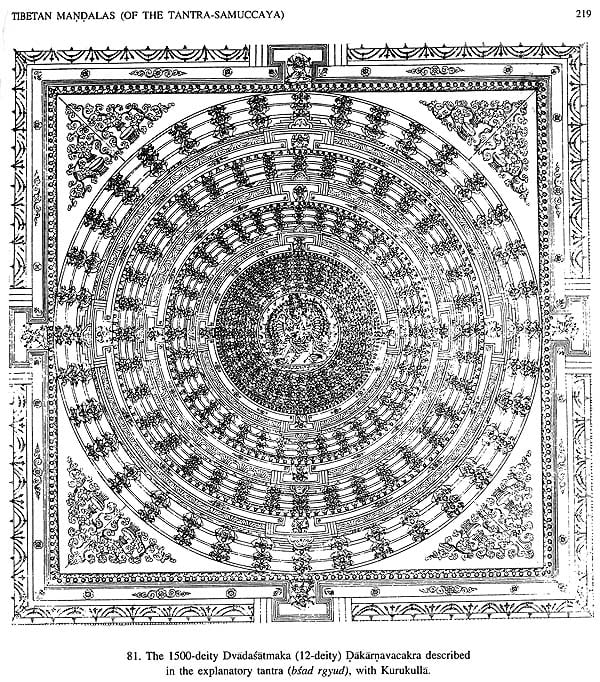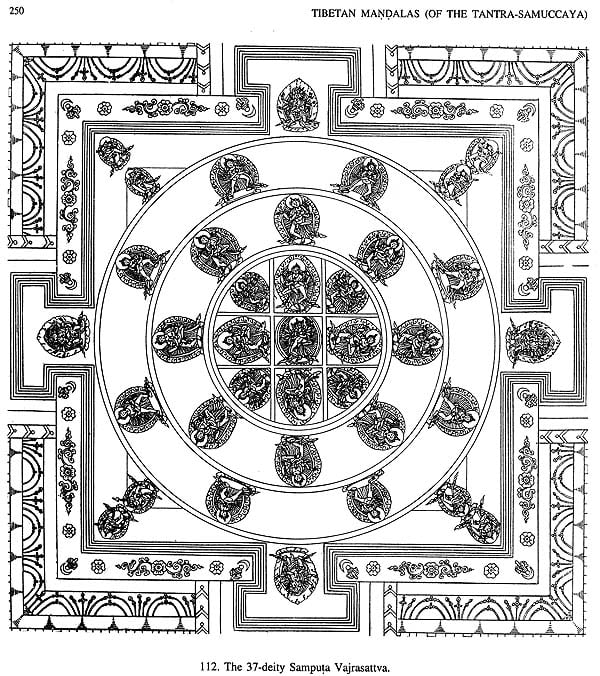
Tibetan Mandalas (Vajravali and Tantra Samuccaya)
Book Specification
| Item Code: | NAN102 |
| Author: | Prof. Dr. Raghuvira and Prof. Dr. Lokesh Chandra |
| Publisher: | International Academy of Indian Culture and Aditya Prakashan |
| Language: | English |
| Edition: | 2003 |
| ISBN: | 8186471014 |
| Pages: | 270 (1 Color & Throughout B/W Illustrations) |
| Cover: | Hardcover |
| Other Details | 11.0 inch x 9.0 inch |
| Weight | 1.20 kg |
Book Description
"A mandala delineates a consecrated superficies and protects it from invasion by disintegrating forces symbolized in demoniacal cycles. But a mandala is much more than just a consecrated area that must be kept pure for ritual and liturgical ends. It is, above all, a map of the cosmos. It is the whole universe in its essential plan, in its process of emanation and of reabsorption. The universe not only in its inert spatial expanse, but as temporal revolution and both as a vital process which develops from an essential Principle and rotates round a central axis, Mount Sumeru, the axis of the world on which the sky rests and which sinks its roots into the mysterious substratum.
"In a general way, it may be said that a mandala contains an outer enclosure and one or more concentric circles which, in their turn, enclose the figure of a square cut by transversal lines. These start from the centre and reach to the four corners so that the surface is divided up into four triangles. In the centre and in the middle of each triangle five circles contain emblems or figures of divinities.
"A mandala, then, is surrounded and circumscribed by a circle on which is displayed an uninterrupted line of scroll-work. This is the Mountain of Fire (me ri), a flaming barrier which, it would seem, forbids access, but which, in fact, according to the symbology of Tantric gnosis, represents consciousness that must burn ignorance, dispelling the darkness of error and leading us to that cognition which we are seeking.
"Immediately after this circle a girdle of diamond (rdo rje ra ba) is drawn. The diamond symbolizes Supreme Cognition, bodhi, illumination, Absolute Essence, Cosmic Consciousness, which, once it has been attained is never again lost. It is, like a diamond, unchangeable. The Buddha, indeed, is seated upon a diamond and Bodhgaya, the place where he attained to Supreme illumination and became the Buddha, is called the 'Diamond Seat' (vajrasana). But this 'Diamond Seat' is not localized in any point in space, neither did lllumination occur just once under the Ficus indica tree on that celebrated night when the Bodhisattva, after having discomfited Mara, the God of Love and Death who reigns over maya, rose by degrees to the supreme Revelation and became the Buddha. The Diamond Seat is outside time and space, it is in every place and at every instant when there is a revulsion from this to the other plane.
"Then comes (especially in the mandalas dedicated to the terrifying divinities) a circle in which eight graveyards are represented. In exoteric tradition these are eight awe-inspiring places where in various parts of India ascetics retire to meditate. They are disposed in a cross, like the diagram of the mandata, four on the principal and four on the intermediate points. They are not nine, for there is no central point. They are peripheral, disposed on the outside limits of the mandata' s cross-pieces or of the eight -petalled lotus which corresponds to the plane of spiritual essences. The central point is lacking because, esoterically, these graveyards do not correspond to definite places but symbolize the eight aspects of the individual and individuating cognition which has been lost. The individual is ship-wrecked in the world of experience, is overwhelmed by the impact of his karma and has fallen into the power of the unconscious. There are eight aspects, because five are in contact with the five sensory consciousness, that is to say they correspond to the impressions which, through our senses, the external world communicates to us. Then come the intellective consciousness (manovijnana) the thinking faculty of the individual, in itself and by itself (vijnana), and lastly, the store-consciousness (a.layavijiia.na), which gathers together and retains both individual and collective experiences.
"These eight forms of consciousness (vijiia.na) are the cause of samsara and they condition its development. As long as they are active we are dragged along on the round of births and deaths. The graveyards symbolizing the vijnana are represented according to a detailed iconographical plan. Each has its own mountain, its own stupa, river, tree and ascetic who sits there absorbed and confident.
"After the graveyards comes a girdle of lotus leaves to signify spiritual rebirth- according to the symbolism mentioned above. The lotus leaves open outwards because the plane they represent is not brought to an end, but stretches out as it were towards the neophyte who knows the mysteries of gnosis and has relived them in his soul. The Gods, however, are seated upon a closed lotus, because they manifest themselves only upon the other plane whose essence they represent. They are at the journey's end. The outside petals turned outwards signify the entrance into the life of polygenesis, but the central bud of the lotus, closed upon itself, symbolizes the Original Synthesis.
"In the middle of this first circle is drawn the mandala properly speaking, which is also called the 'palace' (vimana, in Tibetan zal yas k'ang), that is the place where the images of the Gods are disposed. Its proportions are determined by a unit of measurement that corresponds, generally, to an eighth of the brahma-rekha, that is of the line which bisects the mandala from north to south and symbolizes the axis mundi, Sumeru, the spinal column of man, assimilated to the macrocosm. The unit of measurement for the minor figures is the fourth part of this segment.
"In the middle of each of the four sides a gate opens in the form of a T, flanked with seven bands of five colours which are prolonged along the four sides, thus joining gate to gate and constituting the walls of this sacred city. Over the gates rises a torana, a sort of triumphal arch, resting upon two, or more, lateral pillars. This torana is composed of eleven little roofs, one upon the other and each shorter than the last. On the top of this arch is a disk on which is represented the twelve-spoked Wheel of the Law. To the right and the left, two gazelles recall the preaching of the Buddha's first sermon in the deer park at Sarnath. On the wheel is an umbrella, insignia of royalty, and at its sides are ornamental streamers in vases.
"The walls, which as we have seen are represented by five strips of different colours, are called respectively 'base', 'border', 'bean', 'necklace' and 'half-necklace', since these two latter bands are decorated with necklaces either hanging down or issuing from the mouths of marine monsters (makara)-and finally there is the jewelled fringe. They are all surmounted by a balcony decorated with lotus flowers and on it Trees of Paradise rise up from vases containing the Water of Immortality (bum pa bzang po, bhad-rakalasai. There are also seven gems, symbols of the Universal Monarch, a Cakravartin, that is the wheel with eight spokes, an elephant with six tusks, a green horse, a sixteen- year-old girl, a gem from which shine forth six rays, a red-coloured minister who holds a treasure in his hands and a black general with breastplate, shield and lance."(Tucci 1961:23, 39-43).
In the 11th century there lived Abhayakaragupta at the Vikramasila university, who wrote a general manual of tantric liturgy by the name of Vajravali where he referred to 26 main mandalas, They were later detailed by him in his Nispannayogavali in 26 chapters. This great siddha is practically unknown in India, but the Tibetans adore and venerate him as a saint of the first magnitude. The Blue Annals 2: 1046 record:
"The acarya Abhaya who was endowed with a mind free of illusions in regard to any of the systems of the Prajna-paramita or Tantra, from the Lesser Sciences (rig- gnas phra-mo) to the Anuttara-yoga- Tantra. Because he had recited the mantra of Vajrayogini in his former life, in this life Vajrayogini in the form of an ordinary woman appeared before the acarya Abhaya. Because of his steadfast attitude of a strict monk, he did not admit this woman. (His) great teachers, such as Ka-so-ri-pa and others, told him that he had acted wrongly by not availing himself of the method through which one could realize the sahaja-jnana, On many occasions he prayed to Vajrayogini. The goddess appeared to him in a dream, and said "Now, in this life you will not be united with me. But, if you were to compose many commentaries on profound Tantras and many rites of Mandalas, you would soon become a fortunate one." Following her instructions, he composed the Srisamputatantrarajatikamnayamanjari nama (Tg. rGyud, No. 1918), the Sri Buddhakapala-mahatantra-rajatika abhayapaddhati nama (Mi-'Jigs-pa'i gzun-' grel, Tg. rGyud, No.1654), and the Vajravali nama mandalasadhana (dkyil-'khor-gyi cho-ga rDorje phren-ba, Tg. rGyud, No. 3140). Now, it is said that when the mahapandita from Kasmtra (Sakyasnbhadra) bestowed on three occasions the initiation of the Vajravali (rDo-rje phren-ba), on the first two occasions he performed all (the mandala rites) accompanied by rites of the Anuttara-Tantra (only), and on the last occasion he said: "The Tibetans are very suspicious! Had I not divided (these mandalas) according to the different classes of Tantras, they would not accept the initiations (through their suspicious nature)". Therefore he divided them according to the classes of Tantras and thus bestowed the initiations.
